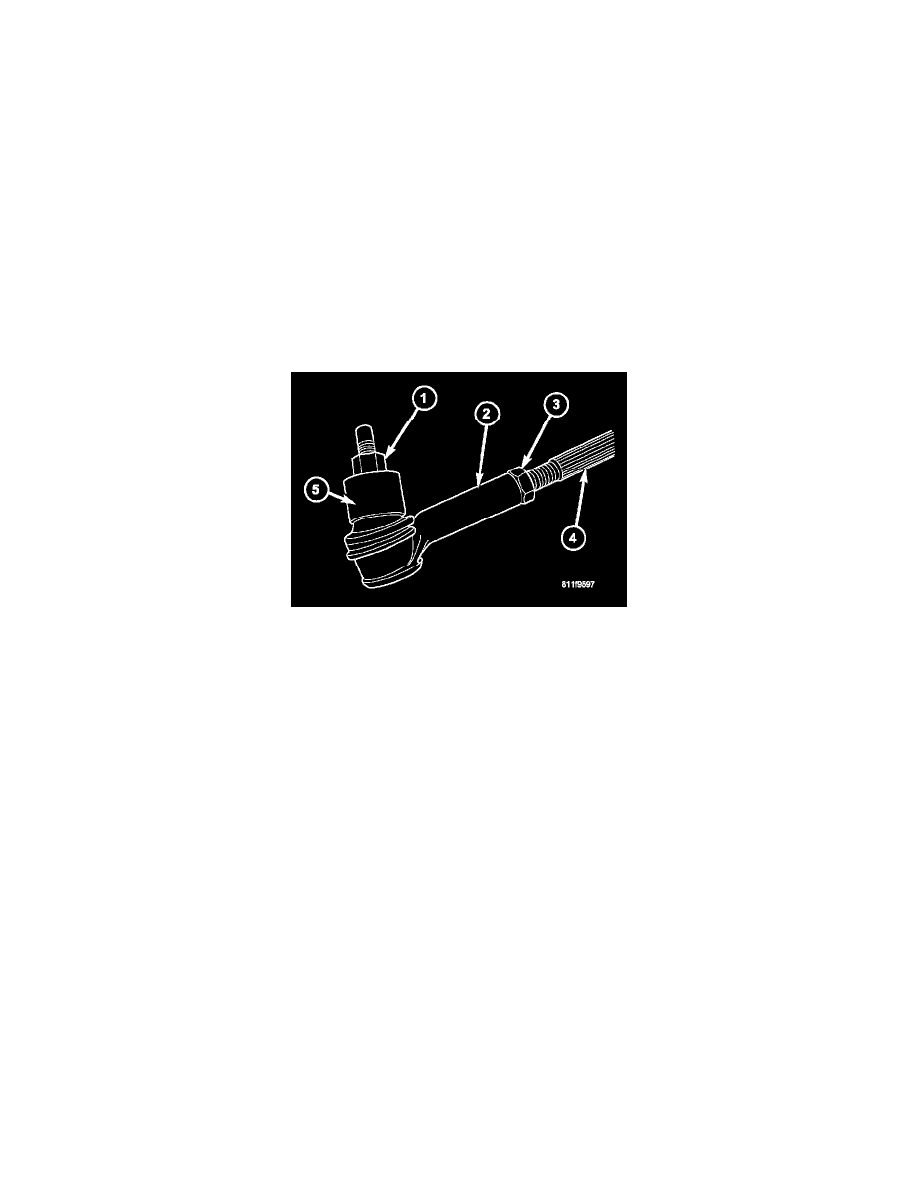Dakota 2WD V8-4.7L VIN J (2005)

NOTE: Camber and caster adjustments must be made at the lower control arm The upper control arm is not adjustable.
NOTE: When the lower control arm cam bolts are loosened the lower control arm will normally go outwards automatically with the weight of the
vehicle.
CASTER
Moving the rear position of the lower control arm at the frame in or out, will change the caster angle significantly and camber angle only slightly To
maintain the camber angle while adjusting caster, move the rear of the lower control arm in or out. Then move the front of the lower control arm
slightly in the opposite direction.
CAMBER
Move both the front and rear of the lower control arm together in or out. This will change the camber angle significantly and caster angle slightly.
After adjustment is made tighten the lower control arm bolt & nuts to 203 Nm (150 ft. lbs.).
TOE ADJUSTMENT
The wheel toe position adjustment is the final adjustment.
1. Start the engine and turn wheels both ways before straightening the wheels. Secure the steering wheel with the front wheels in the straight-ahead
position.
2. Loosen the tie rod jam nuts (3).
NOTE: Each front wheel should be adjusted for one-half of the total toe position specification. This will ensure the steering wheel will be
centered when the wheels are positioned straight-ahead.
3. Adjust the wheel toe position by turning the inner tie rod (4) as necessary.
4. Tighten the tie rod jam nut (3) to 75 Nm (55 ft. lbs.).
5. Verify the specifications.
6. Turn off engine.
